Jos Ashpole from the RSPB reflects on a growing partnership for turtle doves between the UK and the Netherlands.
While we are now in the depths of winter, in this blog we’ll head back to a beautiful summer’s day when my colleague Tony Morris and I set out for the green Suffolk countryside. Our travels took us to a farm in the mid-Suffolk countryside. We were there to meet up with Jules Bos from BirdLife in the Netherlands (VBN) and Alex Wieland, a bird expert from Zeeland province, holding a significant part of the remaining Dutch turtle dove population. They had made the journey over from the Netherlands to learn about some of the things that we are doing to help turtle doves here in the UK.
Disappearing fast
Turtle doves are faring very poorly in the Netherlands – the size of the turtle dove breeding population is now estimated at just 1,200-1,400 pairs, based on fieldwork between 2013-2015 for the Dutch Bird Atlas. This is in sharp contrast to 10,000-12,000 breeding pairs reported in the previous atlas (1998-2000) and an estimated 35,000-50,000 breeding pairs in the mid-1970s. There has been very little research on turtle doves in the Netherlands, so Jules and Alex looked to the work of Operation Turtle Dove in the UK to see what could be done to prevent further declines.
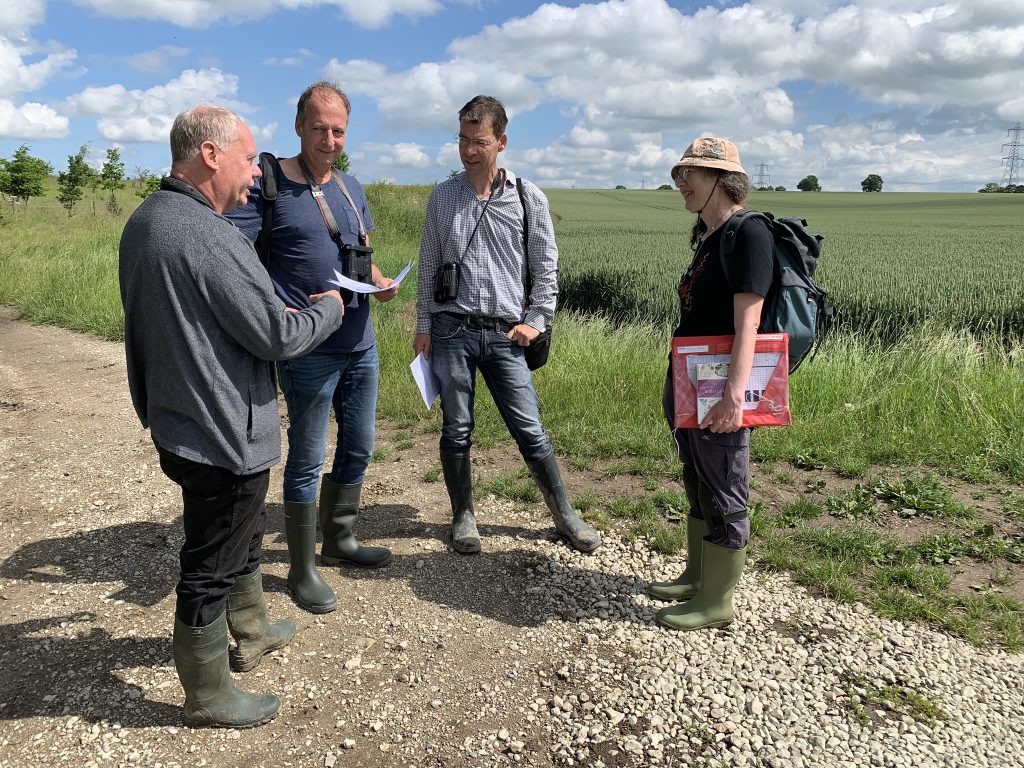
Finding solutions
Many years of research have gone into investigating the reasons behind turtle dove declines in the UK, and the evidence so far points to a lack of food on the breeding grounds being a major factor. Logic tells us that once we know what the problem is, we can go about fixing it and that’s exactly what Operation Turtle Dove is doing.
Staff from the RSPB’s Centre for Conservation Science have tested a variety of different conservation measures that can provide turtle doves with much needed seed food. These range from sowing various types of seed mixes in strips on field edges so that when the plants flower and go to seed there is a good source of food for turtle doves. Another alternative is to allow plants to grow up naturally, no sowing required (natural-regeneration). Both solutions need to provide plenty of seed but also must be accessible to turtle doves, which forage on ground in short, patchy vegetation. A short-term emergency measure which has also been tested is supplementary feeding – putting a specially-designed seed mix out for turtle doves to give them instant access to food.
Further testing
The RSPB’s Conservation Science team are carrying out research into which sown seed mixes (containing different plant species) or natural-regeneration management are the best in terms of the seeds they provide for turtle doves. They’re testing a variety of mixes on a range of different soil types – from sandy soil to clay soil on a number of farms in East Anglia and the south-east of England.
The farm we visited with Jules and Alex was hosting one of the experiments. Julie Rose, RSPB Research Assistant, took us down to the plots on the side of a wheat field. The contrast of the grey-green hues of the wheat and the vibrant colours from the flower strips was quite a sight.
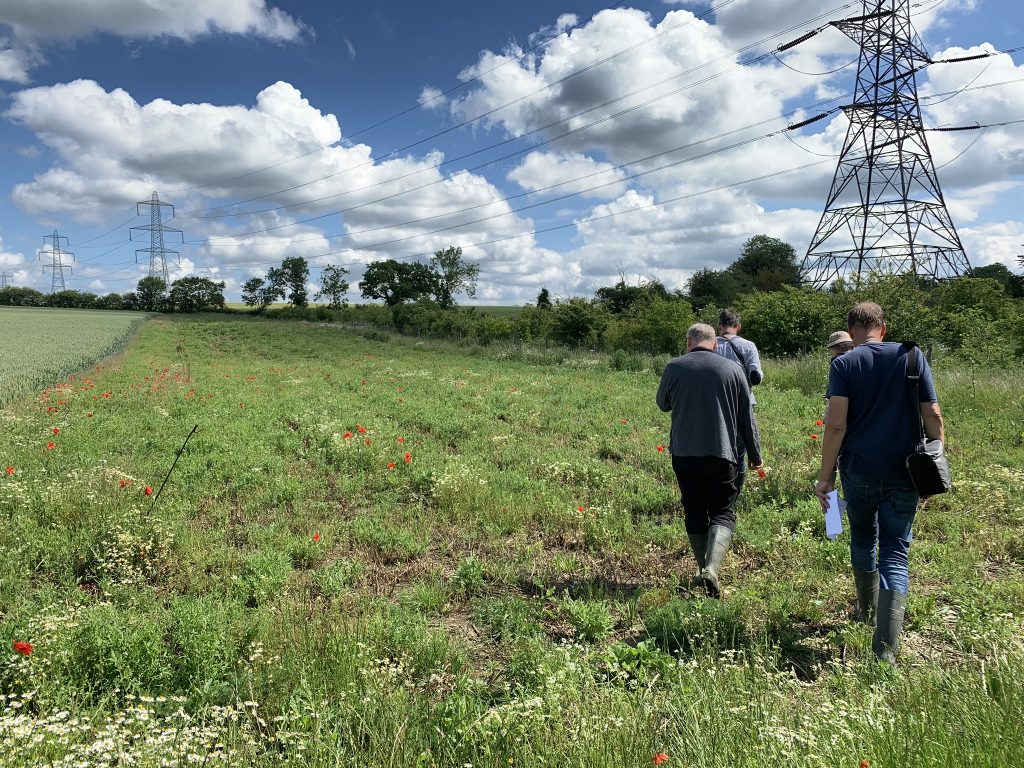
The strips have been sown with a variety of different seed mixes and walking between the different treatments, Julie pointed out a whole host of important seed-bearing plants that we know turtle doves will feed on. We came across black medick Medicago lupulina, with its small, bright yellow flowers and scarlet pimpernel Anagallis arvensis with its coral pink flowers. We also came across fumitory Fumaria officinalis – a tiny but key turtle dove food plant.
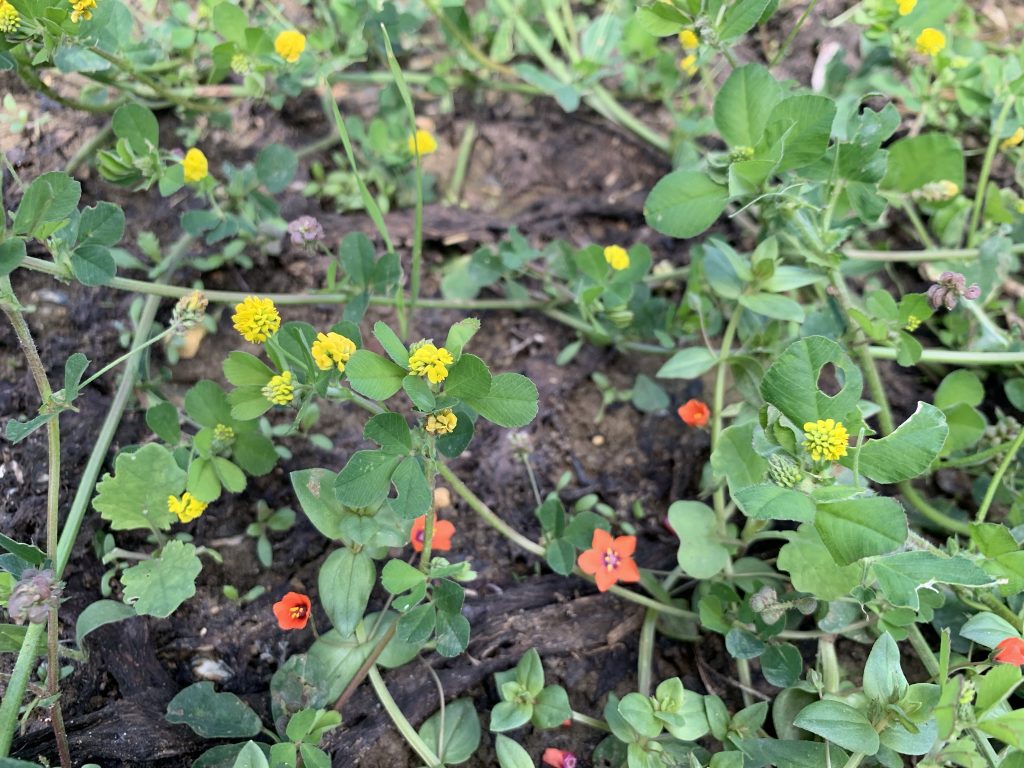
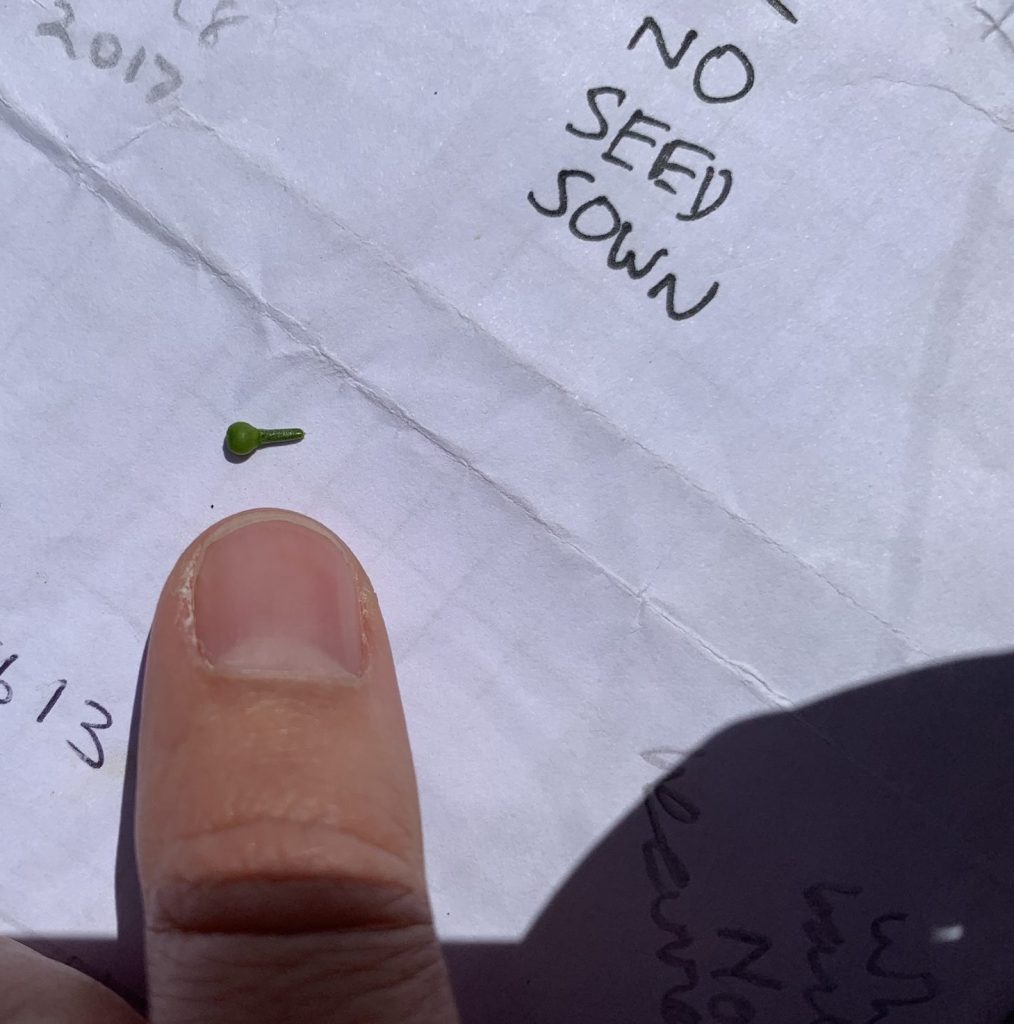
Photo: a tiny fumitory seed, perfect food for turtle doves. Credit: Jos Ashpole
The experiment will continue this year and the results will help us to tailor seed mixes to ensure that these conservation measures are delivering the best results for turtle doves that they can.
Action on the ground
We don’t have to wait though. RSPB Advisers are already working with farmers and land managers across East Anglia and the south-east of England, providing advice on which measures to put in place to help turtle doves – from supplementary feeding, to sowing seed plots, creating ponds and managing hedgerows and scrub to create perfect conditions for turtle doves. Jules and Alex were able to meet with a group of Suffolk farmers to find out how that work is going and to learn more about the various options for helping turtle doves on farmland.
Sharing knowledge
It’s thanks to researchers, land managers and advisers that we can say that Operation Turtle Dove is working hard to ensure that turtle doves have feeding and nesting habitats when they return to the UK in the spring and summer months. It’s inspiring to be able to share our valuable knowledge and experience of what turtle doves need and what we can do to help them with our colleagues in the Netherlands.
By sharing experiences and encouraging everyone to do their bit for turtle doves, we hope to provide turtle doves with a brighter future. Given the promising experiences with supplementary feeding in the UK, VBN has already initiated an emergency feeding scheme for turtle doves in the Netherlands. The scheme started in 2019 and will be continued in the years to come. Jules and Alex will also start experimenting with seed mixes to increase seed food abundance for turtle doves during the breeding season.
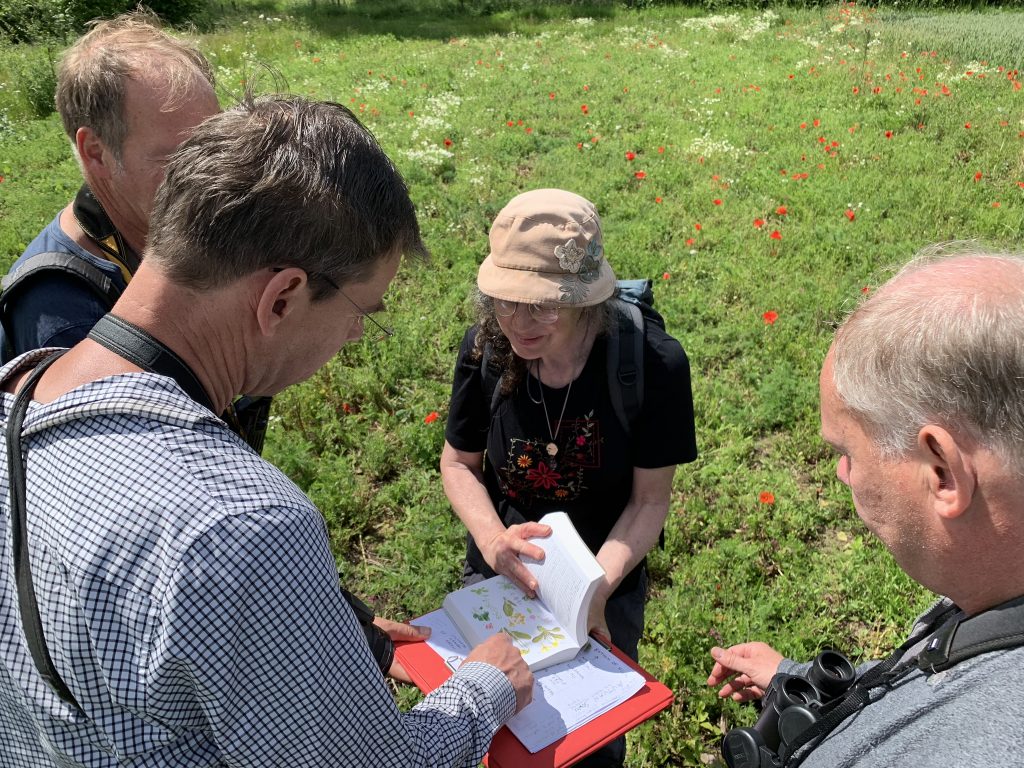
The international Action Plan for turtle doves was launched in 2018. This plan makes it clear that continental-scale action is needed if we are to safeguard the future of the turtle dove. It’s therefore fantastic that links between the UK and Dutch turtle dove teams are already starting to grow. Through sharing our knowledge and experiences we are making a difference for turtle doves.








